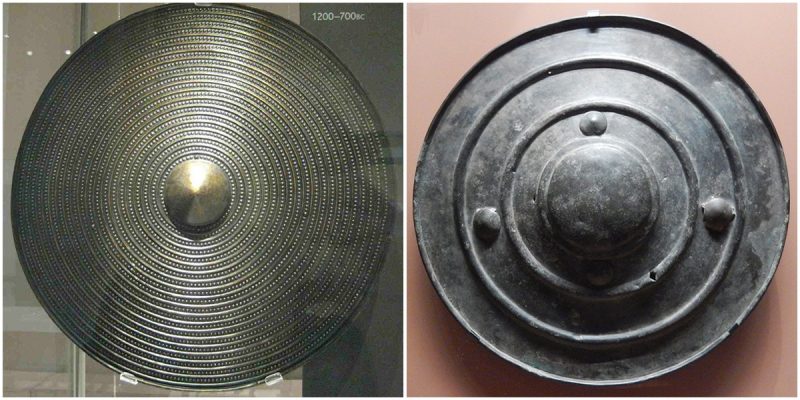The Yetholm-type shield is a distinctive type of shield dating back to 1200-800 BC and is a splendid representative of the rise of large sheet-bronze work in the later Bronze Age period in Europe.
The known shields come from Britain and Ireland in general, with only one found outside of the British Isles, in Denmark. Their modern name came after the discovery of three shields at Yetholm in southern Scotland.
So far, twenty-two examples are known, although some of these are fragmentary, and a further seven or eight are known from written sources but are unfortunately lost today. The shields vary significantly in size, but in detail they are similar.
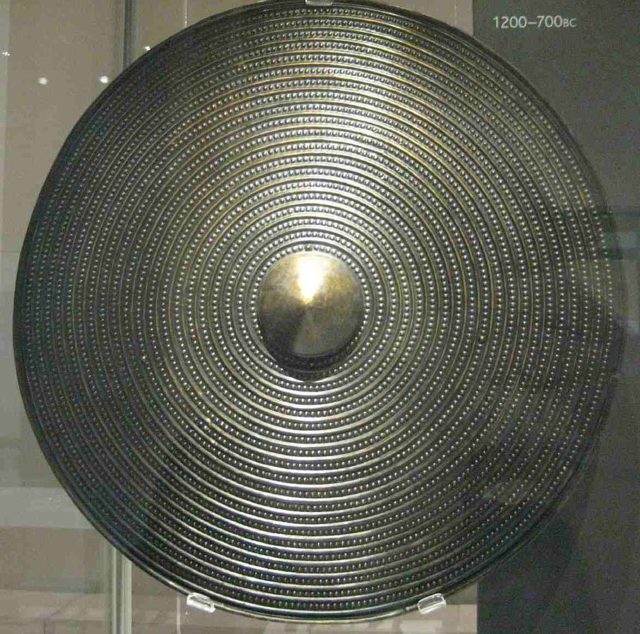
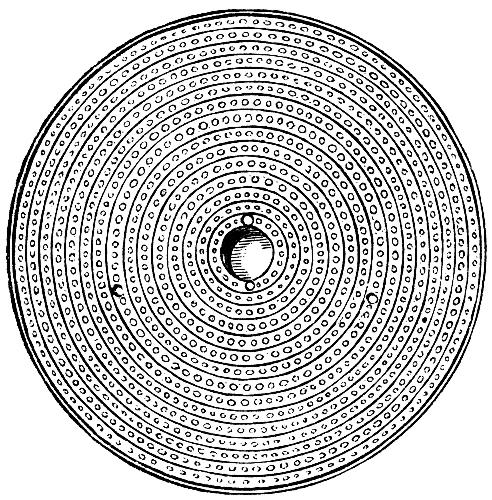
The shields are made of a high tin bronze – a copper alloy sheet, about 0.6 mm thick, and most from the British and Irish style of the bronze shields, are decorated with raised bosses rather than ridges.
A number of shields have suffered damage in the form of holes or missing areas. With the exception of the specimen found at South Cadbury, all shields were found in wet conditions, where they had been placed as ritual deposits.

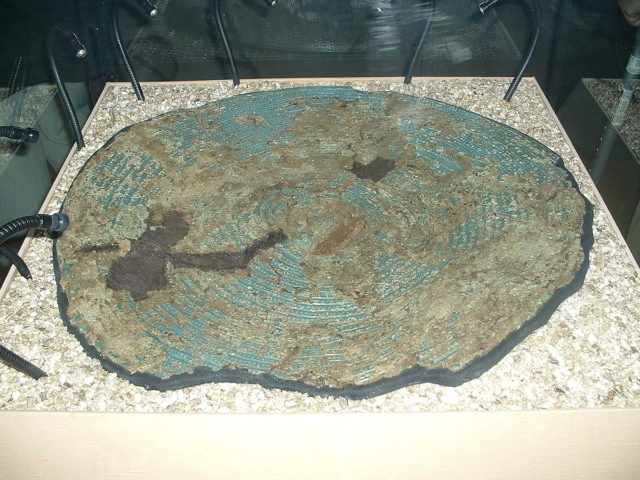
The South Cadbury specimen was discovered at Milsom’s Corner by archaeologist Josh Williams, who was working on the South Cadbury Environs Project in June 1997; it had been found laid in a ditch and stabbed three times with a wooden stake.
The shield is 665mm in diameter and made of sheet bronze, also only 0.6 mm thick, and is characterized by a central circular boss surrounded by concentric alternating lines of raised ribs and small bosses. The thin nature of the metal of the shield would have made it completely unsuitable for use in combat.
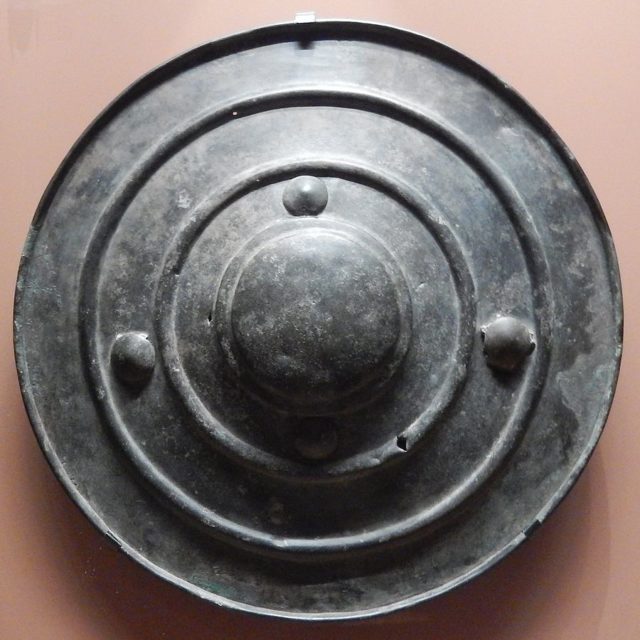
Another shield, known as the Wittenham Shield, was found in the River Thames to the north of Long Wittenham village; it has two lozenge-shaped perforations, interpreted as piercings caused by a spearhead, and other piercings hammered flat to close the gap, suggesting that the shield was a veteran of several combat encounters.
The discovery of these shields has initiated further research into shields in general.
